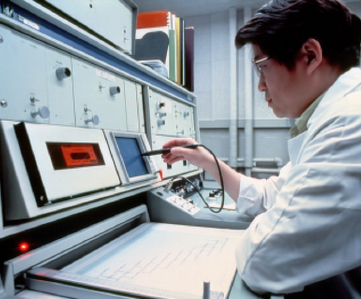The VHA Innovation Program is a cooperative effort between the Health and Medical Information Office (CHIO/HMIO) of the VHA’s Office of Health Information (OHI) with VA’s Office of Information and Technology (OI&T). The scope of this project is to enhance the capabilities of the existing Standing Sentry and AutoOrder software applications. Standing Sentry is intended to provide an interface to capture lab results suspicious for malignancy that need the special attention of care providers. It also enables oversight and redundancy, making the evaluation of “index studies” (clinical data extracts) failsafe. Auto Order is intended for health maintenance and built upon the existing reminder system and used to automatically order lab tests and inform the patient that these orders need to be done by the patient. Our areas of support included analysis, architecture design, layout, software development, testing, deployment and support.
Project Accomplishments
Project accomplishments and associated activities are described below.
Task 1: Project Management and Reporting
The Technik created a Project Management Plan (PMP), which is the blue print that lays out our approach, timeline, and tools to be used in execution of the contract. The PMP specified the development schedule, associated milestones, risks, and assigned resources. Deliverables included project management plan and project master schedule in PMAS format, weekly status meeting minutes, monthly project status reports and lessons learned documentation.
Task 2: Design Development, Testing, Deployment, Training and Support of the Auto Order Standing Sentry System.
Our team implemented the following steps in the analysis, design, development, testing and support of the AutoOrder and Standing Sentry software application:
1. Perform a thorough Survey and Analysis of the existing source code to fully understand all of the business functionality of the Standing Sentry application. This functionality was documented and reviewed by a VA subject matter expert to verify our findings. Deliverables included: A detailed Functional Requirements Analysis document.
2. Define Architecture to expose the existing RPC calls as Web Service calls. This was accomplished by wrapping the RPC calls in C# code and exposing them as MDWS Web Service calls. Deliverables included: A detailed Technical Design document.
3. Developed Source Code and Create Prototype:
Developed Web interfaces to replace the Java Swing interface using Web 2.0 techniques such as AJAX to ensure
that the User Interface supported all of the existing functionality, including: creating, editing, reviewing and processing “follow-up” records, adding comments to the record, referring the record to another provider, and closing/completing the record.
• Upgraded existing Java code for reuse by encapsulating business logic
• Replaced the FileMan file storage of Follow-up records with a relational SQL Server database structure
• Deployed the Standing Sentry application in a Web Container and exposed the “follow-up” records via Web Services allowing other VA systems to integrate the Standing Sentry patient information.
• Facilitated application integration with CPRS and VistA using VistaLink and SOAP MDWS calls.
Deliverables included: a working application prototype and associated source code
4. Application Testing: We conducted unit and integration testing of our source code and prototype applications. VA customers performed end user acceptance testing. Deliverables included: test plans, test results and acceptance results.
5. Deployment: The application was deployed on the innovations sandbox.
6. User Documentation: Technik developed installation guides and user manuals for the Auto Order Standing Sentry System.
7. Training: Technik provided training support in the operation of the VHA Innovations Prototype.
Technologies used
Technologies used include VistA, Java, J2EE, BEA Web Logic, Vista Link RPC calls, Intersystem Cache Database, Struts, Velocity, Spring, JQuery, iBatis, Struts-menu, Spring Security, Spring AOP and CXF Web Services. It is deployed to Oracle Weblogic Server 11g in the Innovations Sandbox, and Uses MS SQL Server for a database store.
